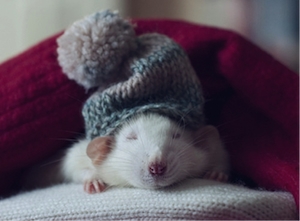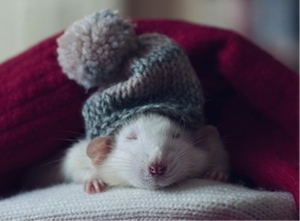A brief review of the paper:
Disturbances in slow-wave sleep (SWS) are induced by models of bilateral inflammation, neuropathic, and postoperative pain, but not osteoarthritic pain in rats. [1]
Part 3 of 3: how would humans be affected by reduced slow wave sleep?
Though the mechanisms between noxious stimuli and SWS are yet to be fully realized, we can infer from this study[1] that the percentage of SWS in humans could be affected in conditions that include ongoing noxious components. What then would be the secondary outcomes to reduced SWS in humans? SWS in human beings is associated with the consolidation of new memories. More specifically, the ability to form and retain non-emotional, fact-based (episodic) memories has been linked to the presence and integrity of SWS. Sleep deprivation studies with humans also suggest that the primary function of slow-wave sleep may be to allow the brain to recover from its daily activities. In addition, being awoken during SWS also has unique properties. For example, a person will typically feel groggier when awoken from SWS, and indeed, cognitive tests administered after awakening during SWS indicate that mental performance is impaired for periods of up to 30 minutes, relative to awakenings from other stages. This phenomenon has been called “sleep inertia.” Other functions affected by reduced SWS include the secretion of growth hormone.
SWS is thus an important feature of sleep architecture whose reduction would conceivably lead to secondary deficits in the areas noted. Hence, the idea that changes in the architecture of sleep is a useful area to measure the occurrence and impact of noxious stimuli through the characteristics of SWS is not without merit. Indeed, the impact of the pathological conditions emulated in this study on sleep quality is ripe for exploration. However, if SWS is to be considered to be an endpoint as a measure of sleep associated with noxious stimuli, more thorough methodology and analyses of this type of study needs to be developed and implemented.
Danny realises that blogs are supposed to be short and begs your forgiveness for his long winded submission. He also offers a cute rat picture as a reward for your indulgence. Please note that the rat is sleeping peacefully and has not been subjected to the cruelties of medical science.
Previous posts:
About Danny Camfferman
 Danny has over 16 years’ experience working in the area of sleep disorders, both as a researcher and in their clinical assessment at the Adelaide Institute for Sleep Health and the Women’s and Children’s Hospital. His research on both children and adults has identified compliance issues related to the treatment of Obstructive Sleep Apnoea Syndrome (OSAS) and on excessive daytime sleepiness associated with Prader-Willi Syndrome, a complex genetic disorder. He completed his PhD on the effects of childhood eczema on sleep quality and subsequent secondary deficits in neurocognitive functioning and daytime behaviour. He has recently undertaken a Research Fellowship with the Body in Mind Group to investigate Chronic Pain through EEG methodologies. Danny is married to Yoko and they have an eight year old daughter, Niko. Together, they enjoy martial arts, particularly Iaido, camping, movies, furniture restoration, good food and their garden.
Danny has over 16 years’ experience working in the area of sleep disorders, both as a researcher and in their clinical assessment at the Adelaide Institute for Sleep Health and the Women’s and Children’s Hospital. His research on both children and adults has identified compliance issues related to the treatment of Obstructive Sleep Apnoea Syndrome (OSAS) and on excessive daytime sleepiness associated with Prader-Willi Syndrome, a complex genetic disorder. He completed his PhD on the effects of childhood eczema on sleep quality and subsequent secondary deficits in neurocognitive functioning and daytime behaviour. He has recently undertaken a Research Fellowship with the Body in Mind Group to investigate Chronic Pain through EEG methodologies. Danny is married to Yoko and they have an eight year old daughter, Niko. Together, they enjoy martial arts, particularly Iaido, camping, movies, furniture restoration, good food and their garden.
References
[1] Leys LJ, Chu KL, Xu J, Pai M, Yang HS, Robb HM, Jarvis MF, Radek RJ, & McGaraughty S (2013). Disturbances in slow-wave sleep are induced by models of bilateral inflammation, neuropathic, and postoperative pain, but not osteoarthritic pain in rats. Pain, 154 (7), 1092-102 PMID: 23664655
[2] Bastuji H, Perchet C, Legrain V, Montes C, & Garcia-Larrea L (2008). Laser evoked responses to painful stimulation persist during sleep and predict subsequent arousals. Pain, 137 (3), 589-99 PMID: 18063478




